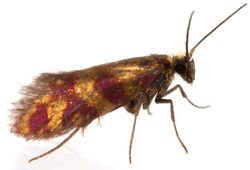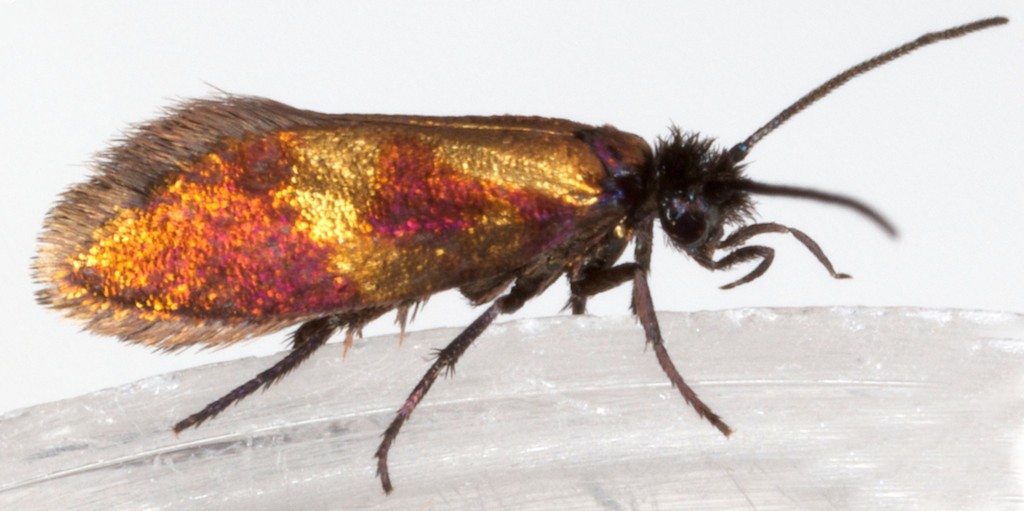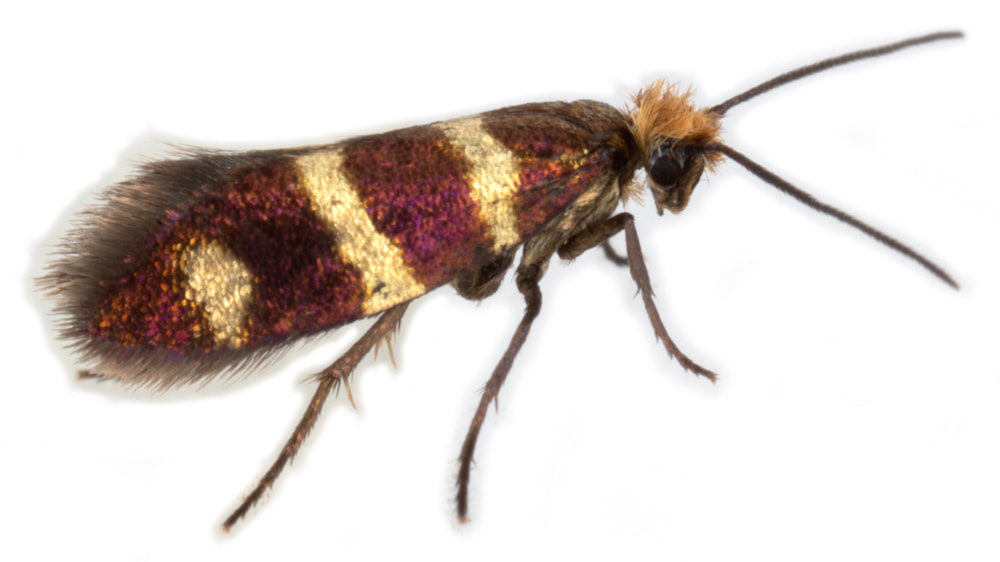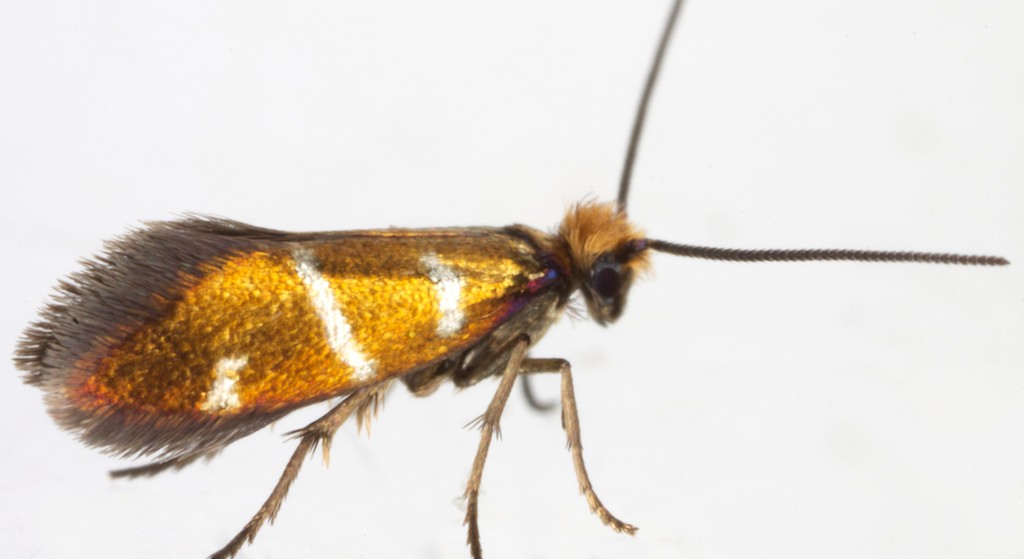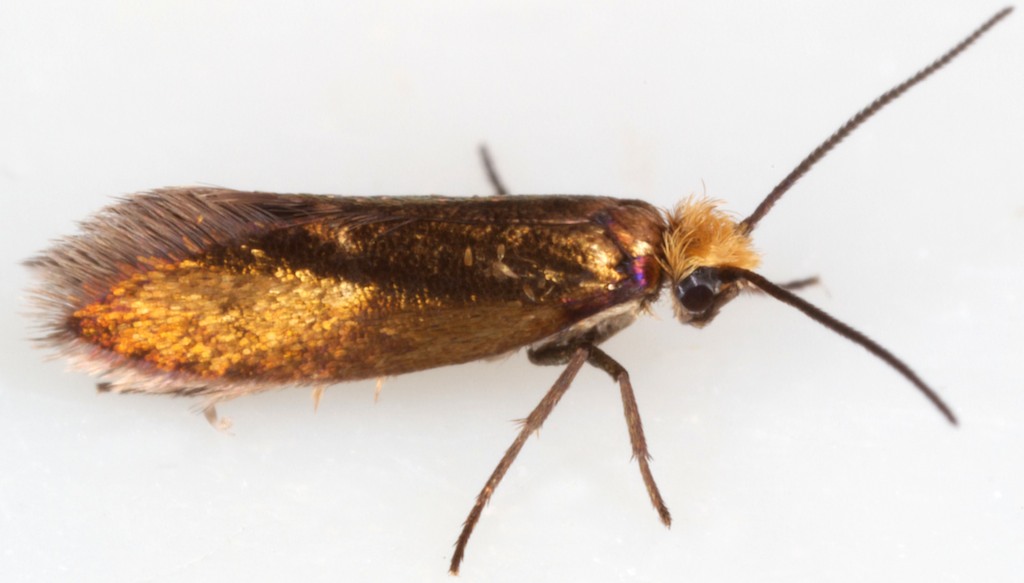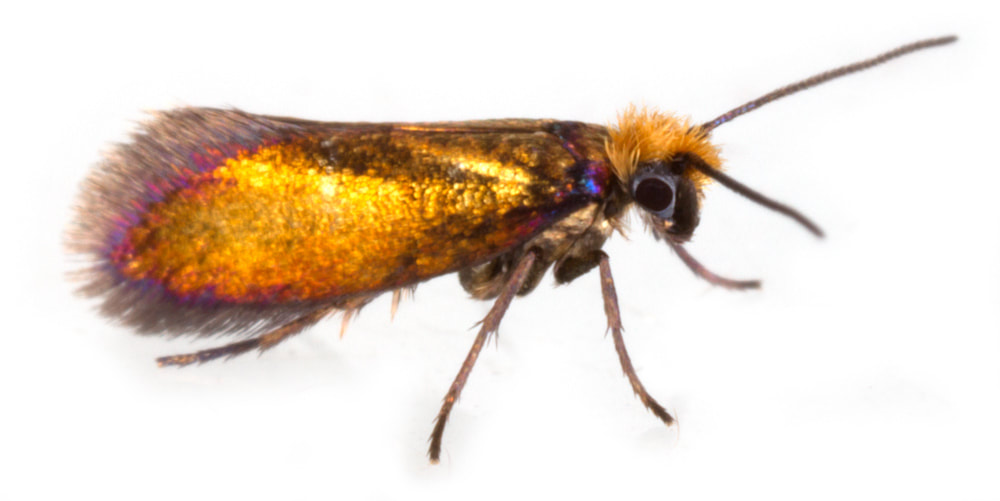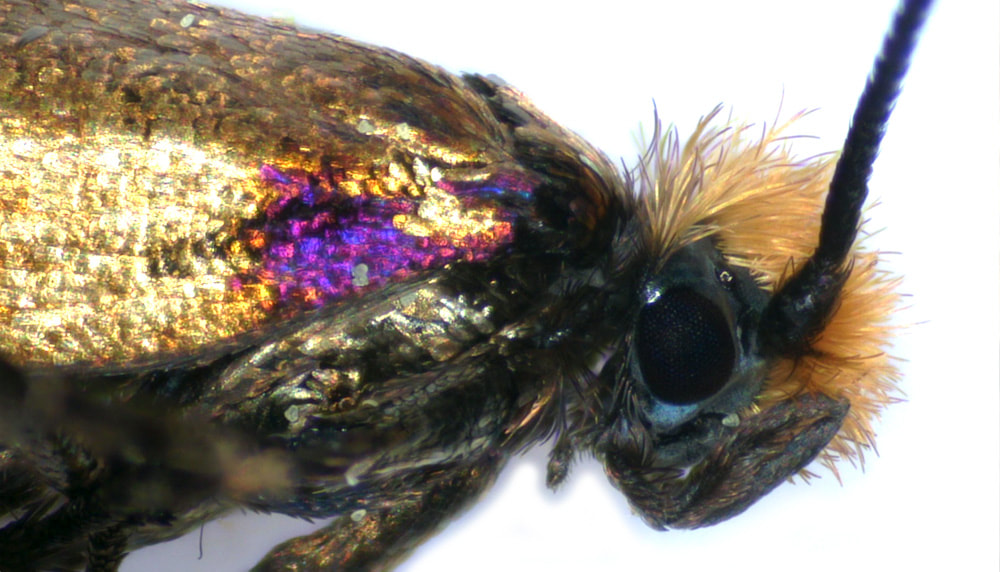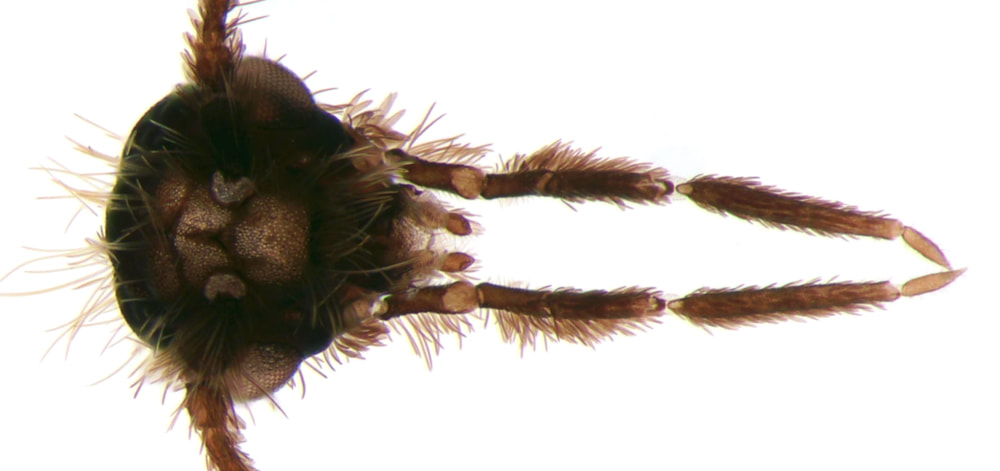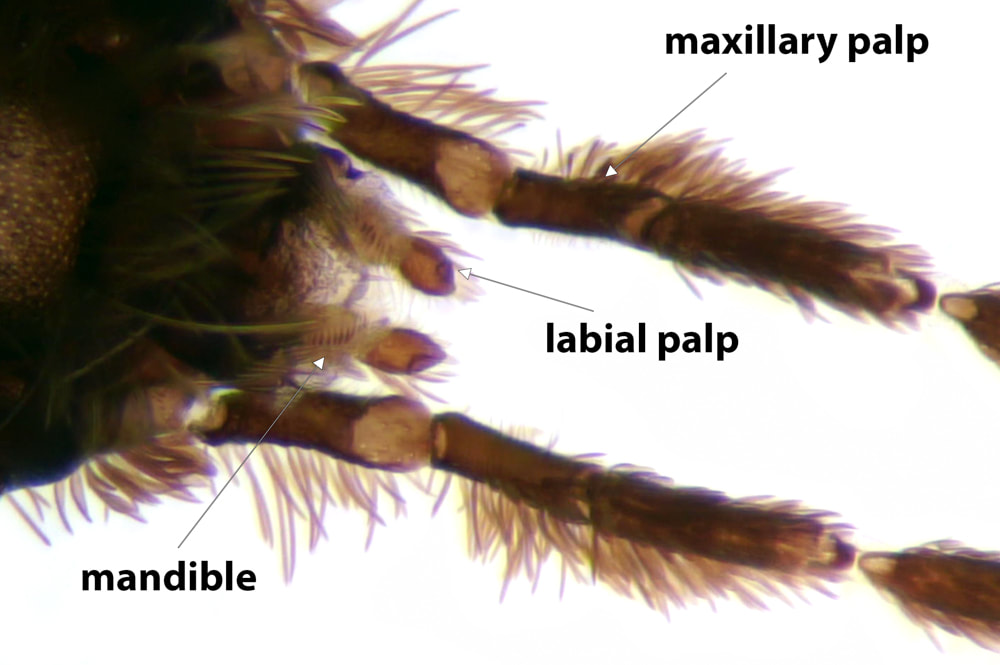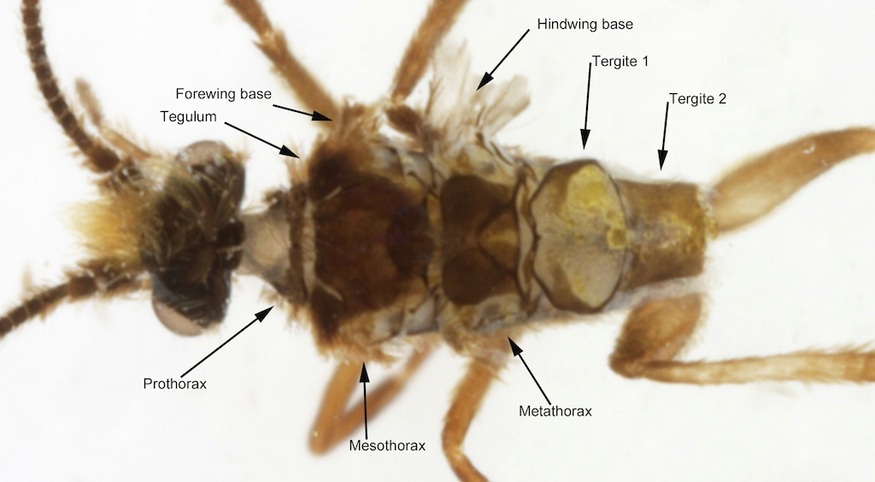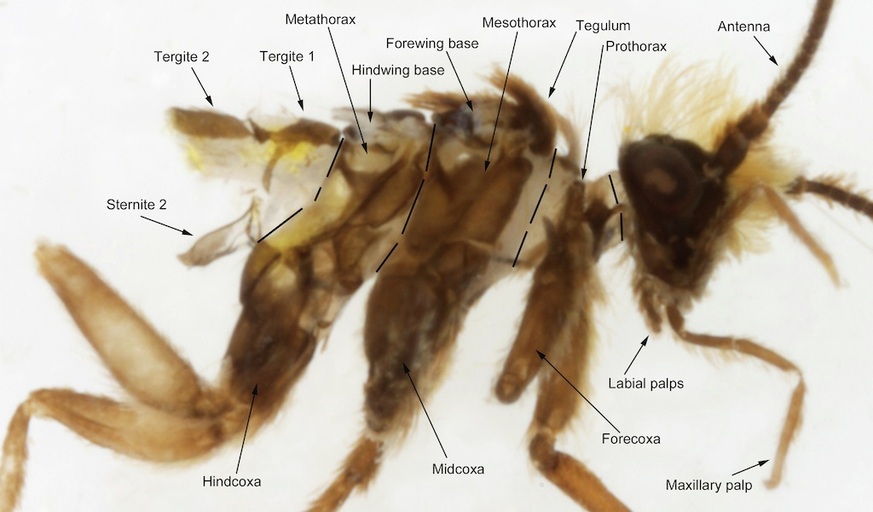Micropterix
Small (ws 5-12mm), diurnal, metallic
Head rough-haired; antenna filiform, half length to length of forewing; ocelli present
Functioning mandibles (difficult to see); maxillary palpi long, 5-segmented; labial palpi 3-segmented; proboscis absent
Forewing and hindwing similar in shape and venation; jugum present (on fw) engaging with subcostal spines (on hw) (frenulum absent)
Foretibia with epiphysis; mid-tibia without spurs; hind-tibia with 2 pairs of spurs
Small (ws 5-12mm), diurnal, metallic
Head rough-haired; antenna filiform, half length to length of forewing; ocelli present
Functioning mandibles (difficult to see); maxillary palpi long, 5-segmented; labial palpi 3-segmented; proboscis absent
Forewing and hindwing similar in shape and venation; jugum present (on fw) engaging with subcostal spines (on hw) (frenulum absent)
Foretibia with epiphysis; mid-tibia without spurs; hind-tibia with 2 pairs of spurs
Key to species |
|||
Head colour |
Forewing ground colour |
Forewing markings |
|
Black |
M.mansuetella |
||
Ferruginous / yellow |
Purple |
Broad pale fasciae |
M.aureatella |
" |
Golden |
Narrow silvery-white fasciae |
M.aruncella (male) |
" |
" |
Broad purple fasciae |
M.tunbergella |
" |
" |
No fasciae, wing-base purple |
M.calthella |
" |
" |
No fasciae, wing-base purple in costal half only |
M.aruncella (female) |
I have found this last distinction to be problematic - several specimens appearing to show purple on only the costal part of the base have proven to be male M.calthella.
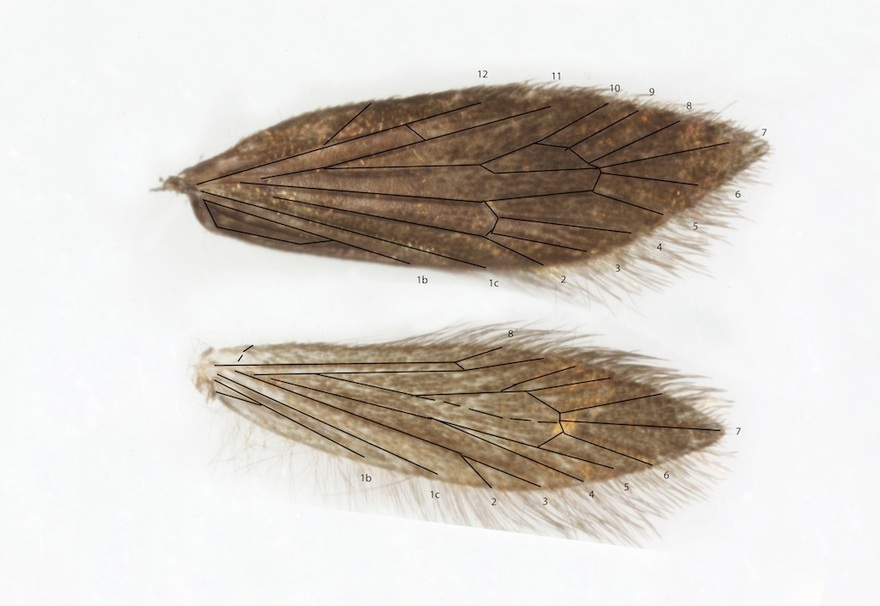
M.calthella: underside of wings showing similarity in size, shape and venation with veins marked and numbered. Ref: MBGBI1
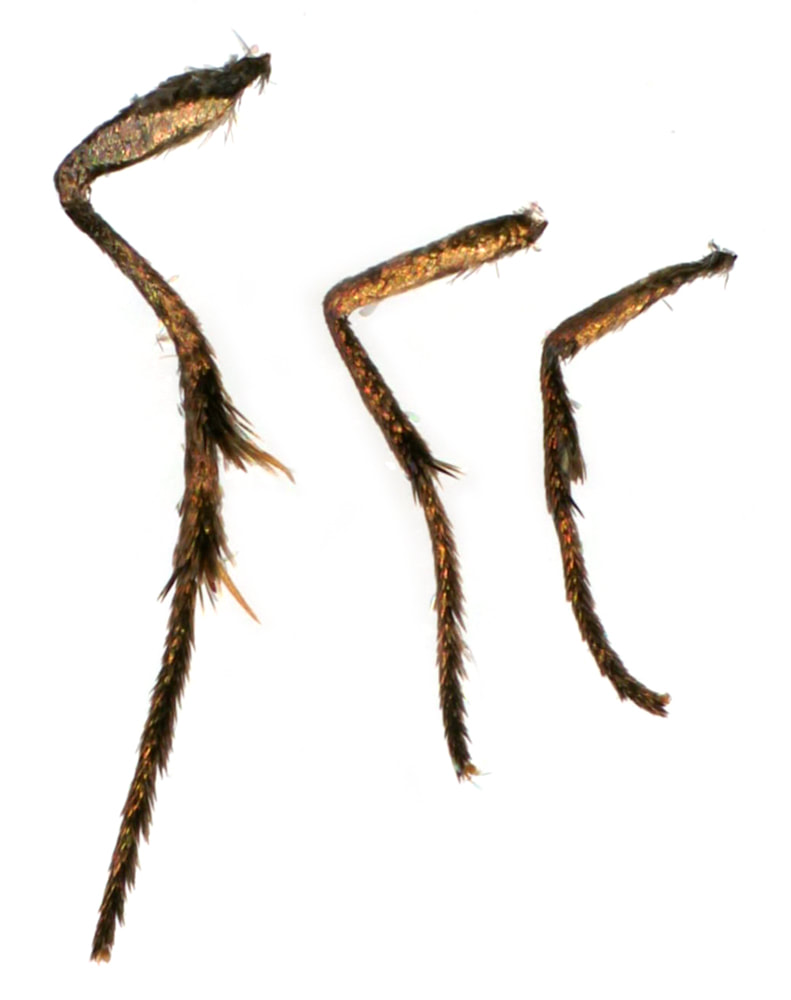
M.calthella: legs. The mid-tibia does show some apical spines but it lacks spurs
All images © Chris Lewis
Page published December 2010 | Text amended 08/11/2015 | several images replaced 29/04/2020
